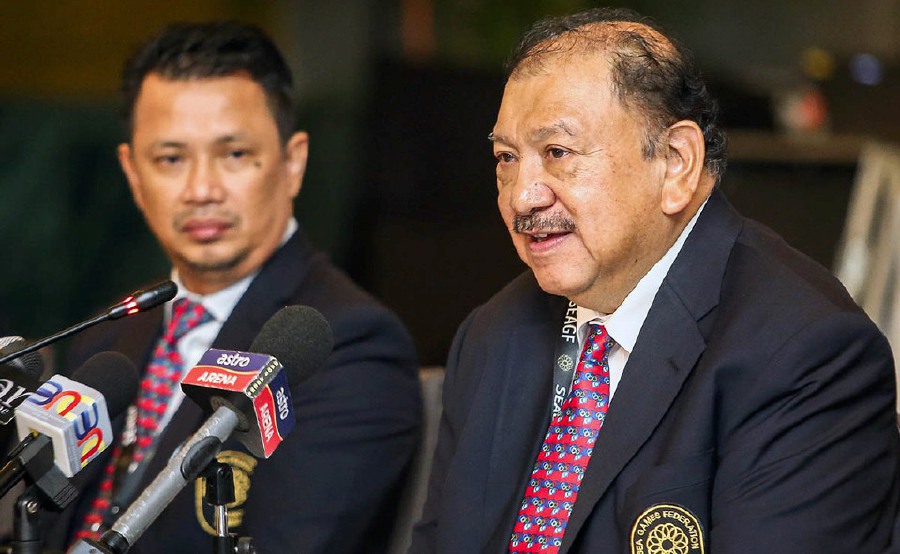Seminar to address sporting facilities turning into white elephants

Multi-sport Games are supposed to leave behind legacies such as sporting infrastructures as well social, economic and environmental benefits.
While most hosts of the Olympics have been successful, there are still many stadiums which have become white elephants due to poor management and maintenance.
One such recent case is the Olympic Park in Rio de Janeiro, Brazil.
Earlier this month, a court there ordered the park to be closed to the public because of safety concerns, dealing another blow to the legacy of the city which hosted the 2016 Olympic Games and Paralympics.
But why look so far away?
Even here, in Malaysia, we have our fair share of sporting facilities which have become white elephants.
We have built so many sporting facilities for so many multi-sport Games — be it the Sea Games, 1998 Commonwealth Games or the biennial Malaysia Games.
Under previous Sports Minister Khairy Jamaluddin, who mooted the idea of turning the Bukit Jalil Sport Complex into a Sports City in preparation for the 2017 Sea Games, the government allocated more than RM1 billion for the upgrading of the venue.
The project was also aimed at making the area a popular spot for tourists.
Then, last year, corporate heavyweight Tan Sri Tony Fernandes was roped in to turn around the flagging fortunes of the Malaysia Stadium Corporation (MSC) as their new chairman.
He is supposed to be responsible for making improvements to MSC’s structure and operations as well as revive their finances.
His appointment was also expected to further boost the youth, sports, recreation and entertainment activities involving assets under MSC, including the National Stadium.
The various states hosting the Malaysia Games were also supposed to build facilities meant to provide better sporting infrastructures for the future development of sports at all levels.
Sadly, many of these facilities are poorly managed, maintained and, not to mention, under-utilised (probably due to very high rentals).
Over the years, we have heard so many cases of astroturf pitches, velodromes, running tracks and football stadiums being poorly maintained or in dilapidated conditions.
Why is that so?
Well, whenever new sports facilities are built, they almost always fail to factor in the maintenance costs and there’s usually no strategy put in place to help the stadiums generate income either.
These are the basics which are sorely lacking among those tasked with running the venues.
There is an urgent need for experts who know about stadium maintenance — a facility management team.
So, it is timely that Sime Darby Foundation, under the chairmanship of Tunku Tan Sri Imran Tunku Ja’afar, will host an international seminar to address the problem.
Titled “Beyond the Games: The Legacy Begins”, the seminar will be held at Sime Darby Convention Centre, Bukit Kiara in Kuala Lumpur on March 31-April 1.
It will focus on optimising the utilisation of public sports facilities and Masters sports among Malaysians.
It will bring together stakeholders as well as local and international experts to discuss and share their insights on the matter.
On Day One, International Olympic Committee Athletes Commission chairperson Kristy Coventry will deliver the keynote address on “Sports for Life: Beyond the Games” while International Masters Games Association CEO Jens Holm will provide an athlete’s perspective via his talk on “The future for sports and recreation for Masters.”
A talk on “Sports and Recreation Facilities for Life: Management and Sustainability” will be presented on the second day.
There will be panel discussions on both days and they will be moderated by Tan Sri Dr M. Jegathesan and Datuk Marina Chin.
Among the list of panelists and speakers are Nik Razeen Adam Daud, the CEO of Stadium Board Malaysia, and Helen Lee, assistant director of Sport Infrastructure Group at Sport Singapore.
Yayasan Sime Darby (YSD) is proud to host the inaugural "Beyond the Games: The Legacy Begins" International Conference on 31 March and April 2020. We cordially invite Malaysians and non-Malaysians to be part of this auspicious event.
Driven by the objectives of encouraging Malaysians to participate in Masters sports (competitive sports for athletes aged above 35), and optimising the usage of Malaysian sports facilities, the conference also aims to form a sustainable sports ecosystem where Masters sports stakeholders may independently organise and/or participate in sporting activities at public facilities, and the facilities may meet all Malaysians’ sporting activity demands.
The conference will bring together critical stakeholders featuring local and international experts to discuss and share insights on various topics related to Masters sports and the utilisation of public facilities for sporting events.
Those who are interested may purchase tickets and learn more about the conference through Ticket2U (https://www.ticket2u.com.my/
Join us and take part in carving out solutions to achieve positive changes for both Masters sports and sports facilities in Malaysia.






